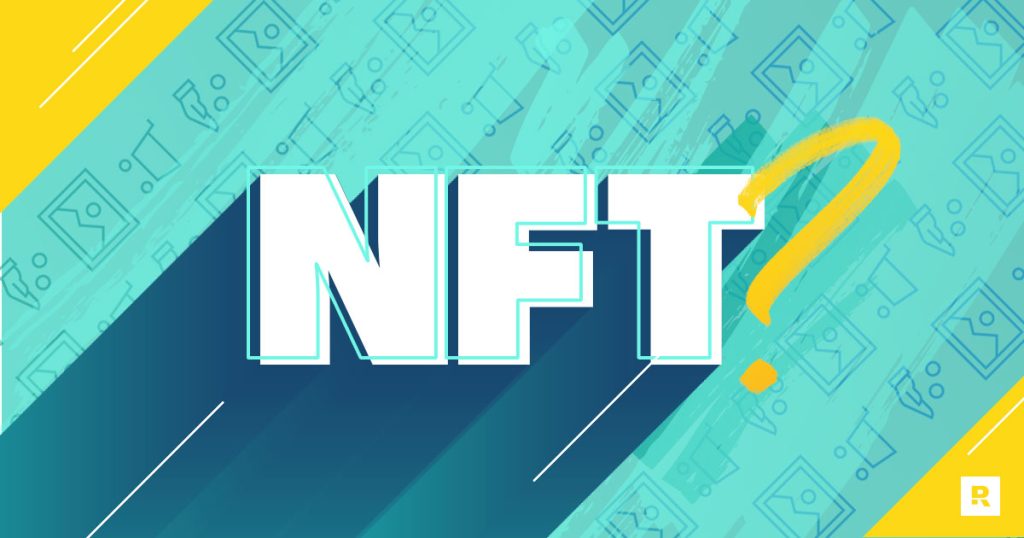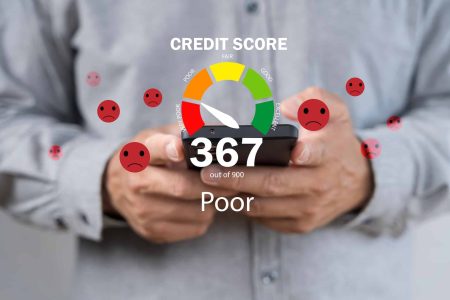Every now and then, there are really weird collecting trends that pop up and people go crazy over because they think they’ll make them rich. Beanie Babies and Pokémon cards, anyone? People were convinced that hoarding these things would pay off down the road when their little trinkets were worth the big bucks. And now you can add another (really strange) thing to that list of useless collectibles—NFTs.
Huh?
NFTs. The latest craze to hit the internet and the world of cryptocurrency. Confused? We were too. So we went and did some digging (so you didn’t have to). Let’s dive into what an NFT is—get ready to feel really old no matter how tech savvy you are.
What Does NFT Mean?
NFT stands for non-fungible token—say what? Yeah, it’s the weirdest phrase we’ve heard in a while too. And what the heck does fungible mean anyway? Well, it basically means it’s something that can be traded one-for-one. A dollar bill is fungible—meaning a one-dollar bill doesn’t hold any more value than another one-dollar bill. But if something is non-fungible, it’s unique all on its own—like a baseball card or piece of artwork.
Speaking of . . .
What Is NFT Art?
NFT art is one of the most common ways to collect NFTs. We all know beauty is in the eye of the beholder, but NFT art? Well, that’s a whole different ball game. NFT art is digital artwork that only exists in a digital world on a little something called a blockchain. The blockchain is like a digital ledger where ownership is recorded—the same way that cryptocurrency ownership like Bitcoin is logged.
Collecting NFTs As Digital Crypto Art
What falls into the category of digital artwork? Almost anything. There’s your regular graphic art that a digital artist wants to sell, then there are GIFs, animations, music and emojis.
Now, you might be thinking, But what if I just right-click “Save As” on a digital photo of a cat wearing a top hat? I saved the photo, and now I own it for free! Not so fast there—the blockchain doesn’t think so. You might have the photo saved in a folder on your laptop, but there’s no evidence you own anything. A quick search on the ol’ blockchain might show that someone else already bought that artwork and they are the rightful owner.
Yeah, the whole thing sounds sketchy. But the truth is, people are paying big bucks for these little tokens.
A digital artist called Beeple sold his artwork in the NFT craze and made almost $70 million!1 Yes, you read that right—million. And Twitter CEO Jack Dorsey’s first tweet was sold off as an NFT and fetched $2.9 million!2 Because almost anything on the internet can be turned into an NFT. Even tweets count now.
Oh, but it doesn’t just stop there. Remember how we compared NFTs to collectible sports trading cards? Well, the sports world wasn’t about to let the NFT opportunity pass them by. The NBA has created something called Top Shot, letting people buy short video clips of iconic sports moments. So, an avid Los Angeles Lakers fan could own a clip of LeBron James dunking in a playoff game. It might sound like something from the year 2200, but people really are buying this stuff. NBA Top Shot has made $230 million!3 Yeah—just when you thought the internet couldn’t get any weirder.
Market chaos, inflation, your future—work with a pro to navigate this stuff.
It’s easy to see those numbers and get caught up in the hysteria. But those stories are the exception, not the rule. Sure, owning NFTs sounds exotic and trendy and cool. But the truth is that the vast majority of these NFTs are maybe worth a few bucks (if you’re lucky). And seriously, do you think owning an NFT collection of cat memes and your uncle’s Twitter rants is going to help you retire someday? Not a chance!
NFTs are just the latest in a long line of get-rich-quick schemes. And when you try to find a shortcut to building wealth, most of the time you’ll end up hitting a dead end. Don’t fall for that trap!
The best way to “get rich quick” is to get rich slow. Research has proven over and over that most millionaires built their wealth through regular, consistent investing over a long period of time. Dave Ramsey’s new book, Baby Steps Millionaires, will show you the proven path that so many Americans have taken to reach millionaire status—and how you can too!
Ramsey Solutions is a paid, non-client promoter of participating pros.
How Do NFTs Work?
It’s going to sound like this all came from a science fiction novel, but stick with us here. Here’s how NFTs work:
Each NFT is unique and can’t be copied. Think of it as something that shows you own a collectible item—only it’s in digital-token form. The NFT represents the true digital ownership of something, so even though someone can copy anything on the internet a million times over, there’s only one true digital ownership of it—the NFT proves that. It’s like the digital receipt showing what’s been purchased. The NFT itself tells you who’s the rightful owner of the digital item on the blockchain ledger.
Here’s the craziest thing of all: Unlike Beanie Babies, Pokémon cards, coins and action figures, NFTs don’t really exist in real life! It’s all digital. So even though you’re paying for something, you never really see what you bought (unless you go look it up digitally on the blockchain). Nothing physically arrives at your doorstep. There’s no signed certificate that you can print—nada. All you get to show for it is your one-of-a-kind digital token called an NFT. But hey, you have digital ownership (but no copyrights) to some really obscure artwork on the internet! So, congratulations?
The whole thing is like the story of The Emperor’s New Clothes. You can’t see anything, but people still tell you it’s there. You can’t see NFTs in real life, but people swear they exist. And what do you get from owning one? Bragging rights—and that’s about it.
How Do You Buy NFTs?
Just so we’re clear, we recommend you don’t drop your hard-earned money on something as ridiculous as NFTs. But if you want to know how the heck people even buy one in the first place, here’s how the process breaks down:
1. Make an account on an NFT marketplace.
Top Shot is one of those marketplaces, but there are others too, like OpenSea and SuperRare.
2. Fund your account with cryptocurrency.
Ah, yes. See, you can’t lay down cash to buy NFTs. Because it’s crypto-related and on the blockchain, you have to pay for it with cryptocurrency in most cases. Basically, if you want to invest in NFTs, then you have to invest in cryptocurrency first (hint: that’s a bad idea).
But that could be changing soon. Payment companies like Mastercard are starting to team up with cryptocurrency giants like Coinbase to try to make it easier to buy NFTs with debit and credit cards.4 Either way, that doesn’t change the fact that NFTs should have no place in your investment strategy!
3. Buy the NFT.
Most NFT buying is done in an online auction (think eBay style). You place bids on what you want to buy, and the highest bidder wins.
How Do You Sell NFTs?
Since almost anything digital can become an NFT, the selling process is really interesting. But before you start thinking about this being your next side hustle—think again. Your mom might be the only person in the world who would want to buy your digital artwork. Still, here’s how NFTs are sold:
1. Make an account on an NFT marketplace.
But don’t expect the money to come rolling in. See, NFTs are only worth a lot of dough if the digital item it’s linked to has value. Tom Hanks’ first tweet—sure. Your first tweet—not so much. Unless you are Tom Hanks.
2. Upload and list your digital item.
Once the item is listed, it’s on the market and ready for bidders.
3. Cross your fingers that it has value and sells.
Hey, maybe that artwork you did of a coffee cup yawning was ironic enough that someone wants to buy it. Cool. But they’ll pay you in cryptocurrency and no actual money will be exchanged—just the glorified Monopoly money that is crypto. And on the off chance that the owner of the NFT wants to sell it (and does), you’ll continue to make royalties off of it every time it sells.
How Is Buying an NFT Different Than Investing in Cryptocurrency?
Well, in a way, it’s not. Like we said before, if you want to invest in NFTs, then you usually have to buy cryptocurrency first—which means you have to invest in crypto to fund this NFT fad (no thanks!). Still, it’s a little bit different since you don’t buy shares of it like you would Bitcoin and Ethereum.
Instead, you’re purchasing a digital trinket on the internet and hoping someone else out there finds value in it too. Enough to (maybe) buy it off of you for more than you paid. Fingers crossed.
Bottom line? Both cryptocurrency and NFTs are unreliable things to invest your (real) dollar bills in. You’re way better off investing in mutual funds that have a proven track record of growth throughout the years.
Should I Buy NFT Art?
No way! Don’t invest in gimmicks and schemes just because they’re trending on Twitter. Nope, not even if you get a digital knickknack to show for it. It’s dumb with a capital D. You might as well just go outside and say, “Wow, I like that cloud. I think I want to own it,” and then throw a couple of 100-dollar bills up into the sky and walk away. That’s a lot like investing in NFTs—except clouds are real. NFT artwork? Not so much. They exist somewhere in Wreck-It Ralph’s world.
The wiser bet for your investments? Talk to one of our SmartVestor Pros about your investment options and how you can get the best return on your mutual funds. These pros have the heart of a teacher and will help make sure you’re only investing in things you understand and feel good about. So, stay away from unstable things like cryptocurrency and collecting trinkets like NFT artwork, and invest in stuff that actually exists.
This article provides general guidelines about investing topics. Your situation may be unique. To discuss a plan for your situation, connect with a SmartVestor Pro. Ramsey Solutions is a paid, non-client promoter of participating Pros.
Read the full article here










